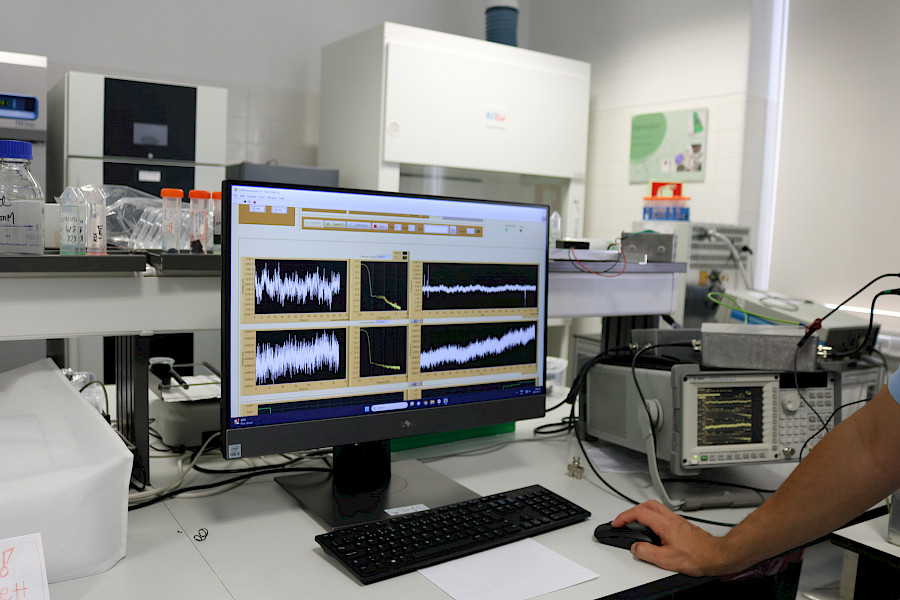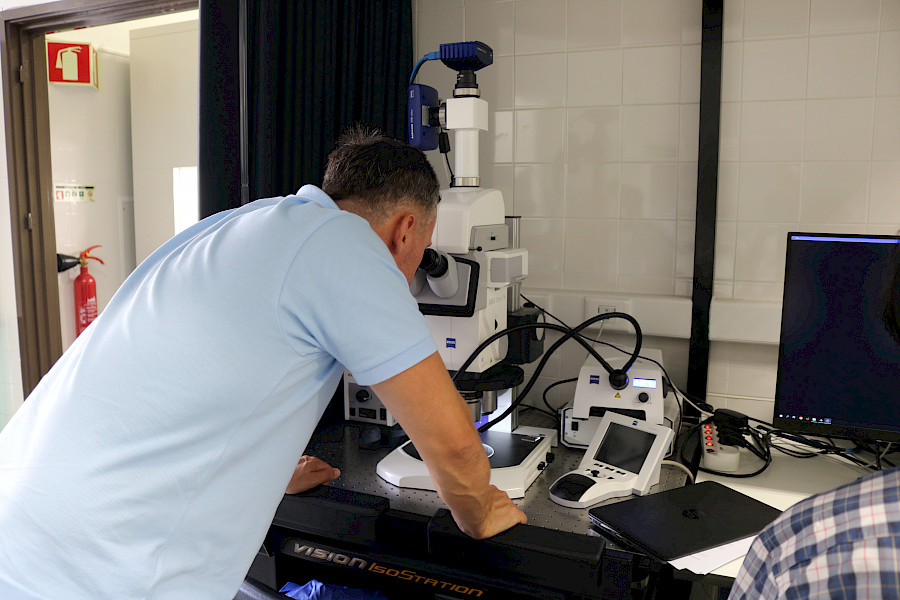UC scientists set up lab to study how microalgae communicate in search of sustainable production of clean energy
The “Generating Energy from Electroactive Algae (GREEN)” project received a €2.2 million Starting Grant from the European Research Council (ERC) in 2020.
English version: Diana Taborda
A research team from the Faculty of Sciences and Technology of the University of Coimbra (FCTUC) has set up a bioelectronics and bioenergy laboratory designed to study how to generate clean and sustainable energy from communication between microalgae.
"This new laboratory is the foundation for novel bioelectricity studies. The equipment available allows us to measure a wide range of signals, from low-frequency signals emitted by the microorganisms we're trying to collect for energy production, to high-frequency signals such as those from human brain cells. I believe this lab will be an asset for multidisciplinary science," says Paulo Rocha, Associate Professor at the Department of Life Sciences (DCV) and researcher at the Centre for Functional Ecology (CFE).
"In addition to the research laboratory, we have also developed a set of sensors that are able to detect communication between microorganisms, namely microalgae and bacteria. We confirmed the existence of communication between these microorganisms and discovered that they do so through ionic channels – which can be measured by several sensors developed by our team and collaborators.
"If we can store these bioelectric signals efficiently, we can have a renewable energy source. That's the main goal of the project," he says.
According to Paulo Rocha, the origin of these electrical signals has not yet been unravelled, but there is already evidence to suggest that they are a response to stress and even an adaptation to certain situations. Until at least 2025, the team will therefore continue to work on understanding this phenomenon and, above all, on finding a new source of renewable energy.
Follow the project on the GREEN website.


